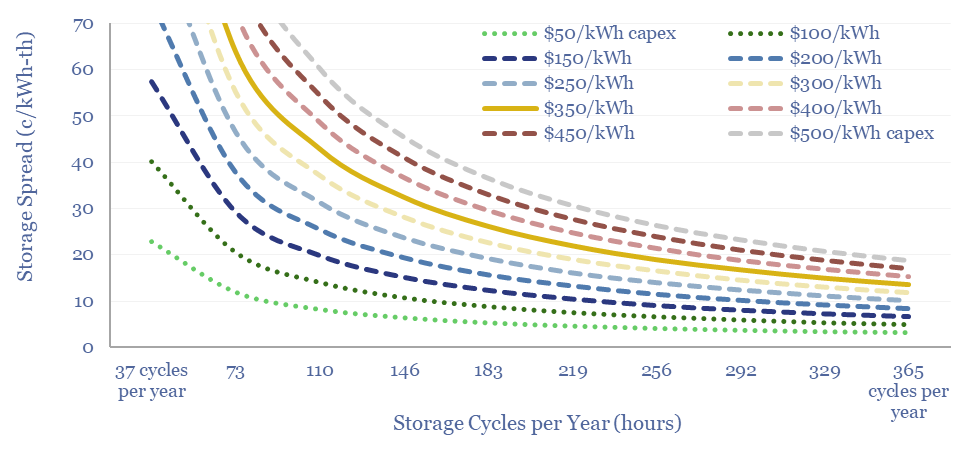Thermal energy storage will outcompete other batteries and hydrogen for avoiding renewable curtailments and integrating more solar? Overlooked advantages are discussed in this 21-page report, plus a fast-evolving company landscape. What implications for solar, gas, lithium batteries and industrial incumbents?
Solar is the new energy source that excites us most, generating electricity from semiconductors, capable of another 50-100% efficiency gains in the next decade (here and here), deflating levelized costs (LCOPE basis) from 6-8 c/kWh today to 4 c/kWh in the global average utility-scale location. But ramping solar requires energy storage. To set some baselines, costs of different backups are re-capped on pages 2-3.
Half way between demand shifting and battery storage is storing up excess renewable energy, converting it to heat, then heating up a thermal storage medium in some kind of well-insulated tank. The heat can be re-released later. Either directly, or via heat exchangers. For example, to make steam. One use for steam is to make electricity.
Thermal energy storage has surprisingly high energy efficiency, even at longer storage durations and across different storage media (pages 4-8).
Thermal storage has high charging capacity, more than electrochemical cells, which has overlooked benefits in power grids (pages 9-10).
Re-releasing energy is where the devil is in the details. Some challenges, and a ‘merit order’ of different heat uses, are on pages 11-13.
The costs of thermal energy storage will likely be at least 35% below lithium ion batteries, but competitiveness versus natural gas depends on the context, as is built up from first principles on pages 14-17.
Implications for European gas markets are on page 18. And for industrial incumbents in heat exchangers and insulation materials.
A fast-evolving landscape of thermal storage companies shows a wide variety of solutions are now being explored (pages 19-21).
Overall, thermal energy storage is likely to outcompete other battery types, which matters for integrating renewables and energy markets.

